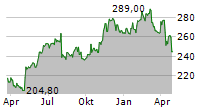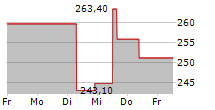Modeled non-crop property & casualty losses rose 25 percent compared to 2024, with severe thunderstorms and other frequency perils accounting for two thirds of total potential losses, according to Verisk
JERSEY CITY, N.J., Sept. 02, 2025 (GLOBE NEWSWIRE) -- Verisk (Nasdaq: VRSK), a leading global data analytics and technology provider, today revealed that the global modeled insured average annual property loss (AAL) from natural catastrophes has risen to $152 billion. This means that in any given year the insurance industry should now be prepared for total annual insured property losses from natural catastrophes that far exceed that amount, according to the latest annual report from Verisk's Extreme Event Solutions business.
The 2025 Global Modeled Catastrophe Losses Reportis an unparalleled piece of research in the industry. The annual report is informed by Verisk's trusted suite of catastrophe models that are widely relied upon by global insurers and reinsurers across the industry for a forward-looking view of risk in the face of inflation, urban expansion, increasing event frequency and a changing climate.
The report notes a $32 billion increase in non-crop global modeled insured AAL over 2024, which reflects the upward trend in catastrophe losses experienced on a global scale. Over the past five years, insured losses have averaged $132 billion per year, compared to $104 billion in the preceding five-year period. Severe thunderstorms, winter storms, wildfires, and inland flood - also known as frequency perils, since they take place relatively ofen compared to larger events like tropical cyclones and earthquakes - now account for two thirds ($98 billion) of the total modeled AAL.
Financial Impact of Frequency Perils Outpace Risk from Large Events by 2 to 1
Severe thunderstorms, winter storms, wildfires, and inland flood - also known as frequency perils, since they take place relatively ofen compared to larger events like tropical cyclones and earthquakes - now account for two thirds ($98 billion) of the total modeled AAL.
"This year's modeled losses reflect a fundamental shift in the risk landscape. Frequency perils are driving sustained, high-impact losses across geographies, and insurers must evolve their strategies to meet this challenge head-on," said Rob Newbold, president of Verisk Extreme Event Solutions. "Natural catastrophe losses are no longer statistical anomalies-they are the new normal. Our models are designed to help the industry anticipate and absorb these shocks with confidence."
More Key Findings - By the Numbers
- Exposure growth accelerates: Property exposure in Verisk-modeled countries grew 7 percent annually from 2020-2024, driven by inflation and construction in high-hazard areas.
- Climate change signal: Approximately 1 percent of year-on-year AAL increases are attributable to long-term climate effects.
- Protection gap persists: In Asia and Latin America, insured losses account for only 12 percent and 32 percent of economic losses, respectively, compared to 48 percent in North America.
Regional Insights
- North America: High insurance penetration, but wildfire risk continues to escalate. The 2025 Palisades and Eaton fires caused up to $65 billion in economic losses, with 60-70 percent insured.
- Asia & Latin America: Significant protection gaps remain, with low insurance take-up rates despite increasing exposure and urbanization.
- Europe & Oceania: Exposure growth driven by inflation and urban expansion, with annual growth rates exceeding 8 percent in some regions.
Modeling Innovations & Regulatory Milestones
Verisk introduced new inland flood models for Malaysia, Indonesia, and Ireland, and updated models for Australia (bushfire), Mexico (earthquake), UK (flood), U.S. (severe thunderstorm) and South Korea (typhoon).
The Verisk Wildfire Model for the United States became the first catastrophe model to complete evaluation under California's new PRID framework, supporting broader insurance availability in wildfire-prone areas.
Newbold concluded, "The report emphasizes the need for insurers and reinsurers to adopt forward-looking risk models that reflect today's built environment and climate realities. Verisk's catastrophe models, used with Touchstone and Touchstone Re, help companies benchmark potential losses and manage catastrophe risk with confidence."
View the full report: Verisk Modeled Insured Catastrophe Losses: A Global Perspective for 2025
Verisk Extreme Event Solutionsoffers a global suite of catastrophe models that cover more than 120 countries and territories, capturing the risk from global natural catastrophes and man-made events, including terrorism and extreme casualty catastrophes. Insurance, reinsurance, financial, corporate and government clients rely on Verisk's advanced science, software and consulting services for catastrophe risk management, insurance-linked securities and agricultural risk management. These solutions enable clients to make informed decisions and help people, businesses and communities build resilience against potential disasters.
About Verisk
Veriskand fosters an inclusive culturewhere all team members feel they belong. For more, visit Verisk.comand the Verisk Newsroom.
Attachments
- Comparison of insured losses exceeding $1 billion by peril between 2015-2019 and 2020-2024 (https://ml.globenewswire.com/Resource/Download/023acfd4-6f7d-4067-a4a9-ea0370ca6b8f)
- Contribution to global insured AAL by peril for all regions (https://ml.globenewswire.com/Resource/Download/f405874d-125a-4a02-909e-d83c8d052dc0)

Mary Keller Verisk 339-832-7048 mary.keller@verisk.com



